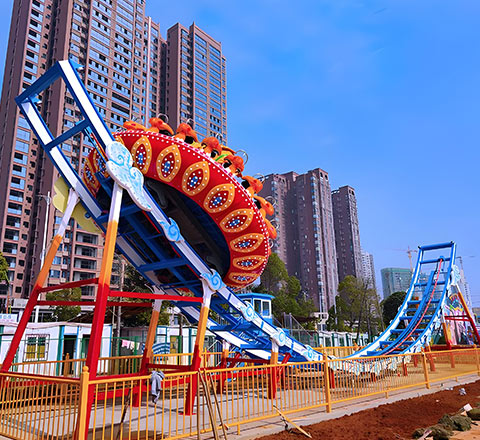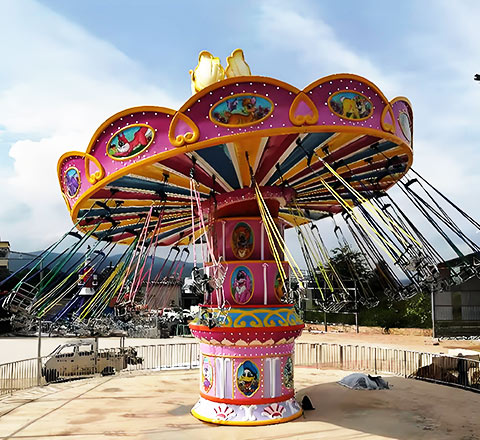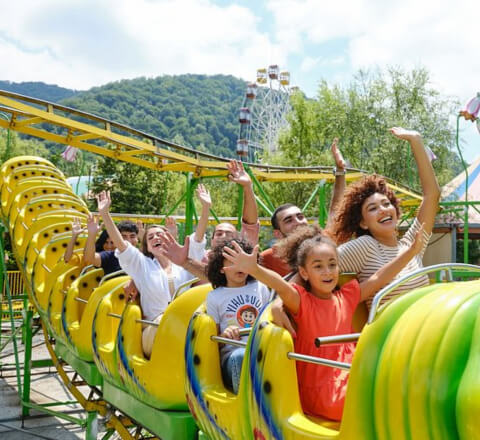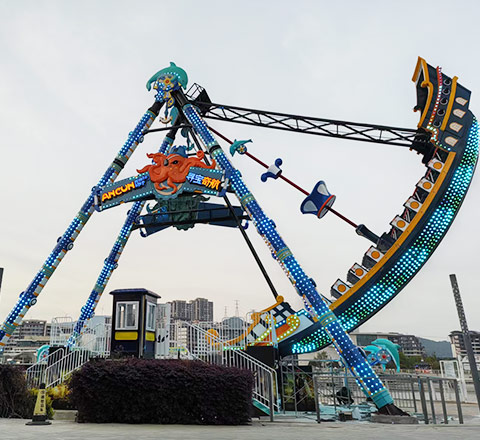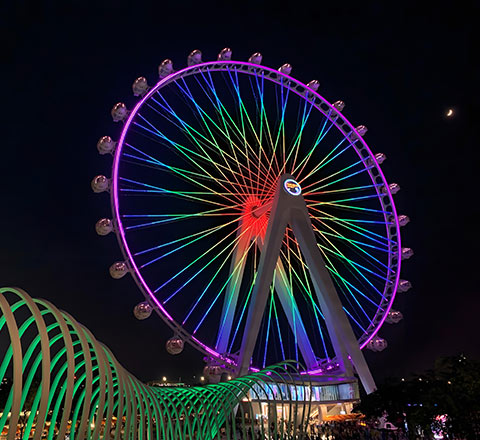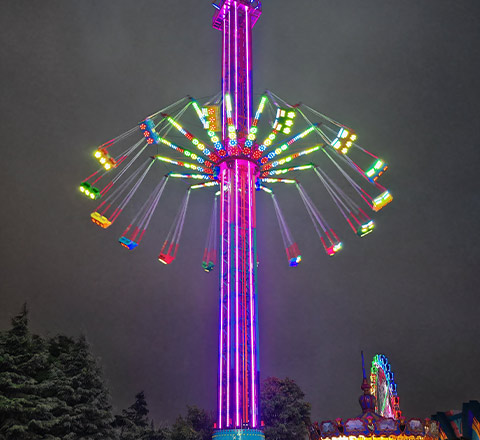Among the many attractions in theme parks and carnivals, the swing ride—also known as the flying swing ride, chair swing ride, swing carousel, wave swinger, or Chair-O-Planes—remains a timeless favorite. Its elegant motion, combining rotation with the sensation of flying, continues to fascinate riders of all ages. But what exactly makes these rides work? Let’s break down the principles behind the swing carnival ride and explore how physics and engineering come together to create this thrilling experience.
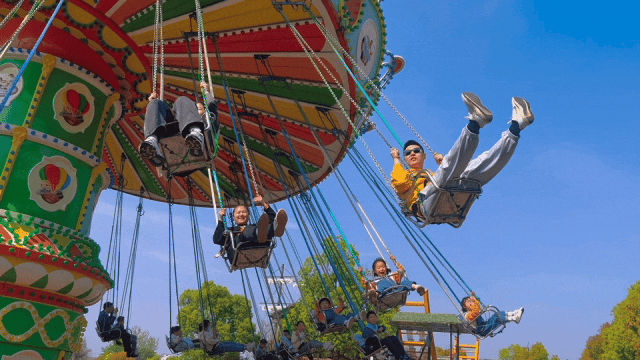
Basic Concept of Swing Rides
At its core, a swing carnival ride is a carousel variation in which riders sit on chairs suspended by chains beneath a rotating canopy. As the canopy begins to spin, centrifugal force pushes the chairs outward, making passengers feel as if they are soaring through the air.
Some advanced versions, such as wave swingers, add tilting tops or vertical lift mechanisms, producing a more dynamic wave-like motion. Tower swings can even raise riders over 100 meters into the sky before rotation begins.
👉 To understand how these rides have developed over centuries, see the full History of Swing Rides.
The Physics Behind Swing Carousel Rides
The thrill of a swinging amusement park ride can be explained by simple physics:
- Centrifugal Force – As the ride spins, riders are pushed outward.
- Chain Tension – Chains counterbalance the outward pull with the rider’s weight, holding the seat at an angle.
- Circular Motion – The combination of horizontal and vertical forces keeps the rider in a smooth circular path.
- Speed & Height Effects – Faster spinning or taller designs increase both angle and intensity.
The result is a safe, balanced motion that feels like flight while maintaining precise mechanical control.
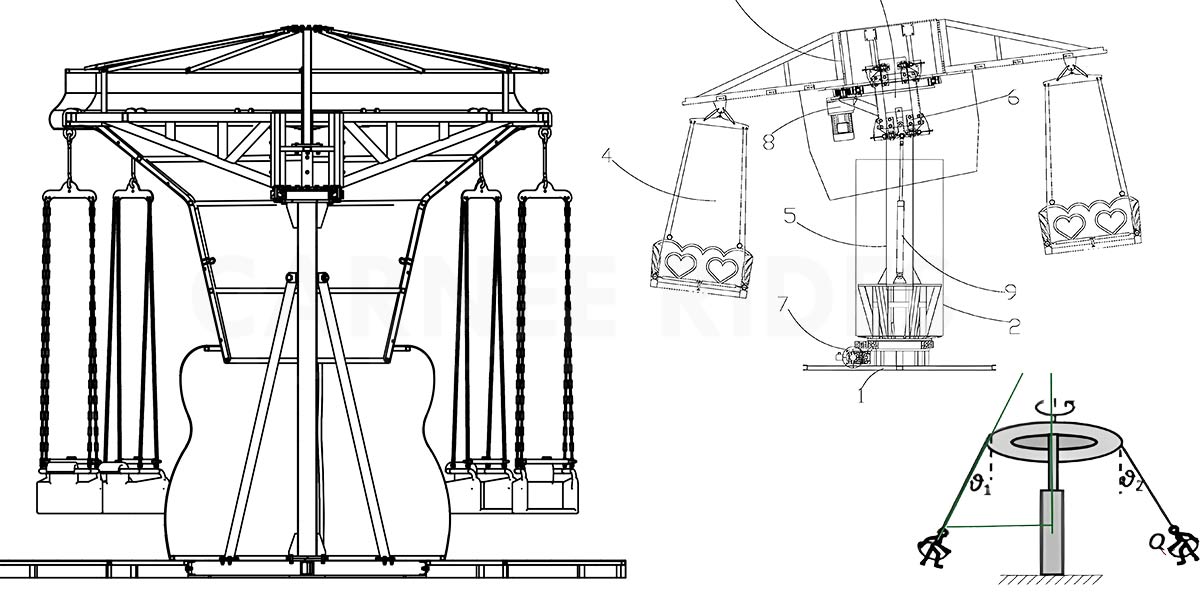
Mechanical System of a Flying Swing Ride
The mechanical system is the backbone of every swing carousel ride. It typically includes:
- AC Motor & Gear Reducer – Supply the rotational power.
- Slewing Bearing – Allows the canopy to rotate smoothly.
- Steel Support Frame – Provides structural stability and distributes forces evenly.
- Seats & Chains – Designed to handle rider weight and the pull of centrifugal force safely.
Together, these components generate stable motion while ensuring long-term durability and safety.
Swing Ride Electrical System Explained
The electrical system controls power and operation. Key elements include:
- Control Box & Power Supply – Usually a three-phase system that powers the motor and circuits.
- Frequency Converter – Manages motor speed for steady acceleration.
- Safety Circuits – Emergency stop switches and backup power systems.
- Lighting Circuits – Low-voltage power for decorative lights, enhancing the ride at night.
Operators follow a sequence—power on, test signals, rotation startup, and gradual speed control—ensuring smooth and safe performance.
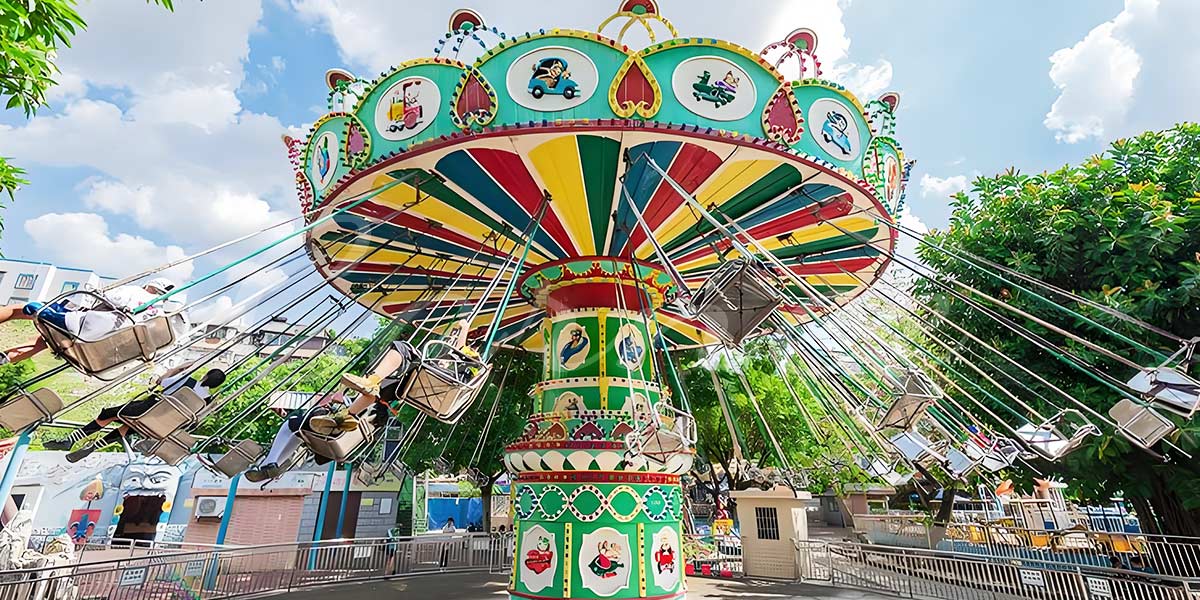
Variations in Swing Ride Motion
Different types of swing rides create different motion experiences:
| Type of Swing Ride | Main Features | Rider Experience |
| Standard Swing Carousel | Basic rotation, fixed top | Gentle swinging motion |
| Wave Swinger | Tilting rotating canopy | Adds wave-like, up-and-down motion |
| Tower Flying Swings | Seats lifted 30–100 m before rotation | High-altitude thrill ride |
This variety explains why amusement park swing rides appeal to children, families, and thrill-seekers alike.
Rider Experience – What It Feels Like
When a carnival swing ride at a fair begins, riders first feel a slow lift before the rotation speeds up. Soon, centrifugal force pulls them outward, creating a unique sensation of flying.
- Kiddie swing rides: Gentle motion for children, often placed in malls or family parks.
- Standard carnival swing rides: A balance of excitement and comfort for both kids and adults.
- Swing tower rides: Breathtaking heights, panoramic views, and high-speed thrills.
This versatility makes the swing ride one of the most popular and profitable attractions at amusement parks worldwide.
(See More other popular theme park rides: Top 10 Most Popular Amusement Park Rides)
Conclusion
Though seemingly simple, the swing carnival ride is a fascinating mix of physics, mechanical engineering, and electrical systems. From basic carousels to giant tower swings, it continues to offer the timeless joy of soaring through the air.
For a deeper look at installation, safety standards, costs, and maintenance, visit The Ultimate FAQ Guide to Swing Carnival Rides.

